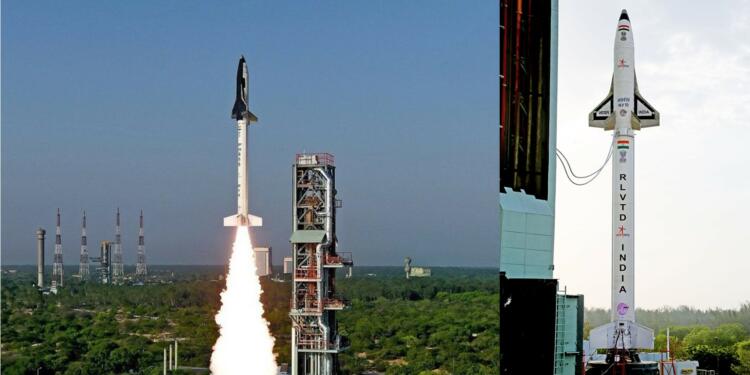The Indian Space Research Organisation (ISRO) is the world’s most efficient, economical, and effective space exploration institution. Since the inception of space programs in India, ISRO has been a forerunner in launching cost-effective space missions. They are not only competing with the world’s elite space agencies but also providing low budget space services. On one hand, they are advancing Indian science to heights previously unknown. On the other hand, they are aspiring to provide low-budget space services to the world.
Cost-Effective Rockets for Global Market
While addressing the inaugural session of the international conference and exhibition, the Department of Space and Chairman of ISRO, S Somanath highlighted India’s aspiration to design and build a new reusable rocket for the global market. In the 7th Edition of Bengaluru Space Expo (BSX) 2022, he said that at present it costs around USD 10,000 to USD 15,000 to launch a one-kg payload into orbit.
While talking to the press, he said, “We have to bring it down to USD 5,000 or even USD 1,000 per kg. Only way to do that is to make the rocket reusable. Today in India we don’t have reusable technology yet in launch vehicles”.
Further explaining about India’s plan, he said, “So, the idea is the next rocket that we are going to build after GSLV Mk III should be a reusable rocket. ISRO has been working on various technologies, including the one demonstrated with the Inflatable Aerodynamic Decelerator (IAD), last week. We will have to have a retro-propulsion to land it”.
Also Read: With ‘Mission 2024’, ISRO has now set its sight on Venus
Need of Reusable Rockets
While stating about the need, the ISRO head said, “all of us want launches to be much cheaper than what we do today. This is the idea and we are working on that idea. That idea can not be ISRO’s alone. It has to be an industry’s idea. So, we will have to work with them in designing a new rocket, not only designing it, engineering it, manufacturing it and landing it as commercial and operating it in a commercial manner”.
It is pertinent to understand that ISRO’s push towards reusable rocket technology is driven by its overall capacity. Reusable rockets are the launch vehicles that carry payload to outer space and return back after the completion of a mission.
Equipped with heat shields, grid fins, and other flight control surfaces, the reusable rocket performs the automatic task of aviation in space. It’s like a space shuttle.
Reusable rockets decrease the cost of space programs. Unlike traditional launch vehicles, most of the parts that return back to the earth can be reused in the next space mission. The multiple uses of a single rocket reduce the cost of space missions to a great extent as space agencies do not need to build a new rocket for the next mission.
ISRO’s RLV-TD Program
ISRO is silently working on the Reusable Launch Vehicle-Technology Demonstration or RLV-TD. It is a series of technology demonstration missions that have been considered a first step toward realizing a ‘Two Stage To Orbit’ (TSTO) fully reusable vehicle. A Winged Reusable Launch Vehicle Technology Demonstrator (RLV-TD) has been configured to act as a flying testbed to evaluate various technologies. Namely, hypersonic flight, autonomous landing, powered cruise flight, and hypersonic flight using air-breathing propulsion.
Read More: ‘Sasta, Sundar, Tikau’ – ISRO is making India’s very own space shuttle
Reusable rocket program of ISRO is far more complex and ambitious than Elon Musk’s SpaceX reusable Falcon-9. ISRO speaking about the project stated that “since ISRO wants to learn how to recover, bring back to Earth the upper stage of the rocket, which is usually lost in space.”
Explaining further, he added, “the upper stage of the rocket has the most complex and most expensive electronics and if one can recover the upper stage it would certainly bring down the cost of rocket launching dramatically, also reduce space debris”.
Reports suggest that the global space launch service market in 2021 was valued at USD 12.67 billion. The market is projected to value USD 31.90 billion by 2029.
If ISRO masters this reusable rocket technology then the space exploration cost will substantially come down and the space agency can simultaneously progress with multiple experiments. Moreover, the low-cost experiments will help the ISRO to capture the global space launch market.
Although ISRO is currently the most economical organisation to launch space vehicles but after mastering the reusable rocket technology, it will become the dominant force.
Support TFI:
Support us to strengthen the ‘Right’ ideology of cultural nationalism by purchasing the best quality garments from TFI-STORE.COM































